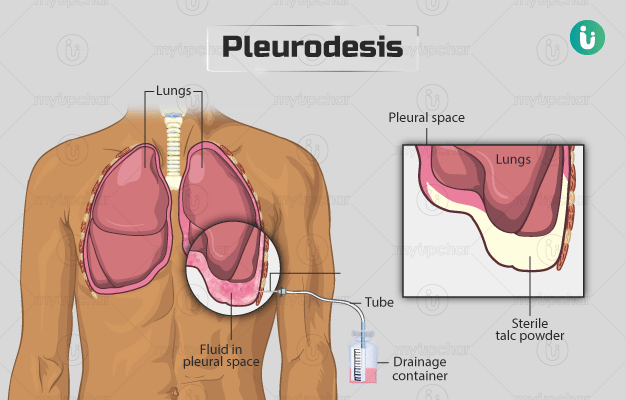Summary
A pleurodesis procedure is performed to treat (drain or vacate) fluid or air entrapped inside the pleural space. The pleural space is a cavity located between the two thin membranes (pleura) present around lungs.
Before the surgery, your doctor will ask you to undergo various tests to check the health of your lungs. You will have to fast from midnight before the surgery until the surgery is performed or until you are fit to eat/drink again.
The surgeon will insert a chest tube to drain out the trapped fluid or air and administer the medicine. The tube is required to be kept in place for at least 24 hours. During the procedure, the surgeon will inject medicines such as doxycycline or talc powder inside the pleural space in your body, which will seal the two membranes together and prevent the accumulation of fluid or air, thus helping improve your breathing.
After the surgery, proper care is advised to keep the surgical area clean and dry. The doctor will prescribe painkiller medicines for pain relief after surgery. You will be asked to revisit the hospital after seven days to get the stitches removed.










































